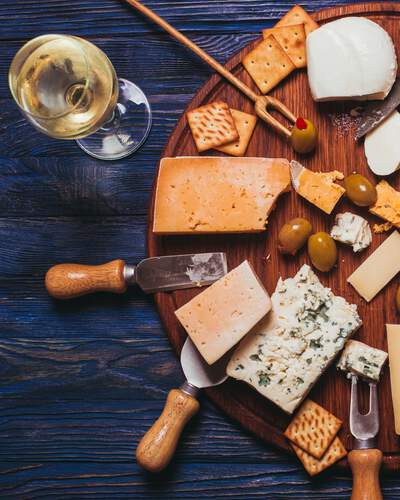WINE AND CHEESE PAIRING
As a sommelier, pairing food and wine is what I love to do. But like many things, some pairings come easier than others. Even the most natural combinations can be tricky at times. Understanding a few important concepts will remove the guesswork and have you creating an amazing cheese and wine pairing every time.
REGIONAL PAIRING
Regional pairings are best described with the saying “what grows together goes together.”
One of the most famous regional pairings would be Goat Cheese and Sauvignon Blanc from Loire Valley, France. Goats in the Loire Valley tersely graze on the grasses, flora, and fauna on the hillside terrain where Sauvignon Blanc finds its natural home.
The same holds true for many artisan goat cheeses found here in Washington. Their tangy cheese pays compliment to the grassy, herbaceous, and bright acidity tasted in the Sauvignon Blanc grown in our region.
TEXTURAL PAIRING
Never underestimate the texture (cheese) and the body (wine) to be able to guide you in a pairing.
One of the best ways to grasp what is meant by “body” is to use milk as a reference. Imagine the texture difference between skim milk and cream and then imagine the same to be true between a light-bodied Riesling and a full-bodied Syrah.
Texture can be used to compliment or contrast a pairing. A compliment example would be buttery Camellia with a creamy Chardonnay. A contrasted pairing would be a triple crème Brillat-Savarin with a palate cleansing high-acid sparkling wine.
The world of wine and cheese is vast and ever-changing. There are no set rules, only guidelines to lend a hand. This means you’ll be required to do some wine and cheese tasting, and the best way to get comfortable with creating pairings is by experimenting. Enjoy the journey!
- Shelly Fitzgerald, Wine Education Specialist, CS, CSW, AWE, WSET Level 3
